Abstract
Public health researchers frequently rely on random-digit dialing (RDD) telephone surveys in monitoring trends in health behavior and evaluating health promotion interventions. RDD response rates have declined during the past decade, and cost-effective methods to increase response rates are needed. The authors evaluated two levels of enhanced calling efforts in an RDD survey of cancer-related health behavior in the State of Washington. The first level of enhanced calling effort was 1 month after 11 original calling attempts to a household, when the authors attempted up to 11 recalls. The second level was 6 months after the first answered call, when the authors recalled those persons who could not be interviewed. Enhanced calling efforts increased the overall survey response rate by 11 percent. Nine percentage points of the increase were attributable to call backs. There were demographic differences among the participants reached at different levels of calling effort, but no consistent associations of level of calling effort with health behavior related to alcohol use, smoking, diet, or health screening. Marginal costs for interviews completed with enhanced calling efforts were about 50 percent higher than costs for interviews reached in the first 11 calls. The authors concluded that enhanced calling efforts may be justified, because they increase confidence in the generalizability of survey results. However, the authors found very little change in survey results by including interviews from persons who were difficult to reach and to interview.
Full text
PDF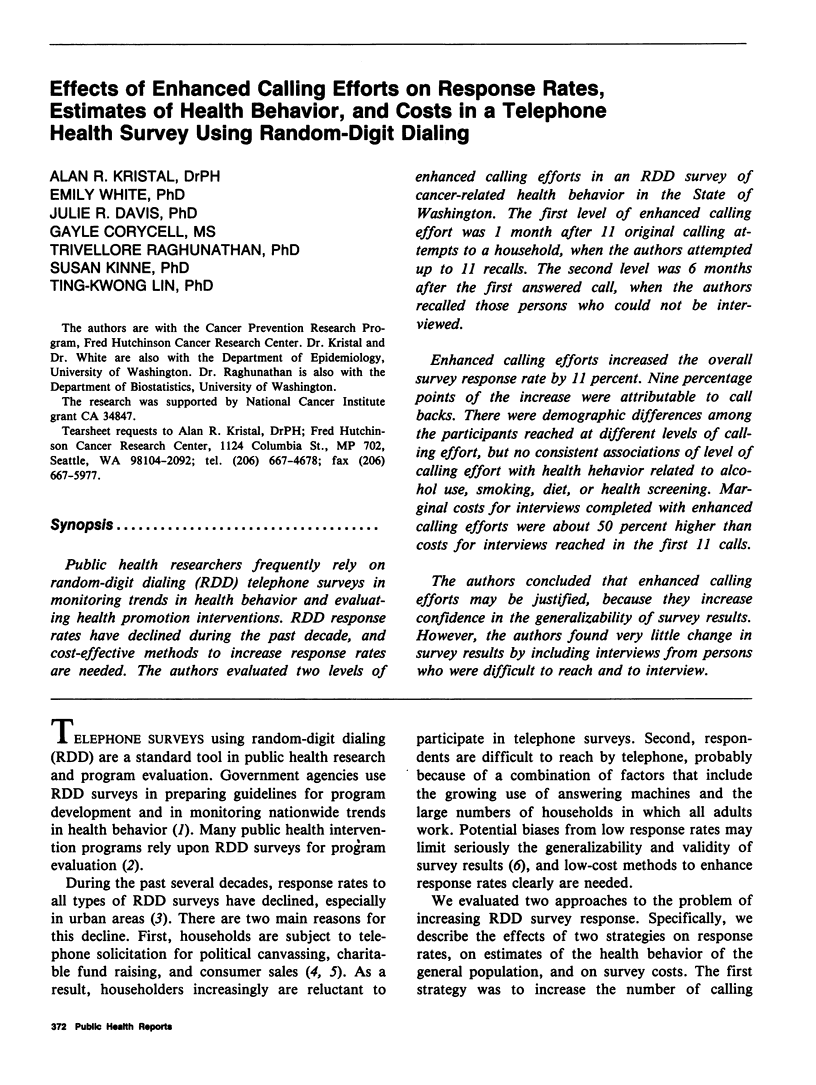
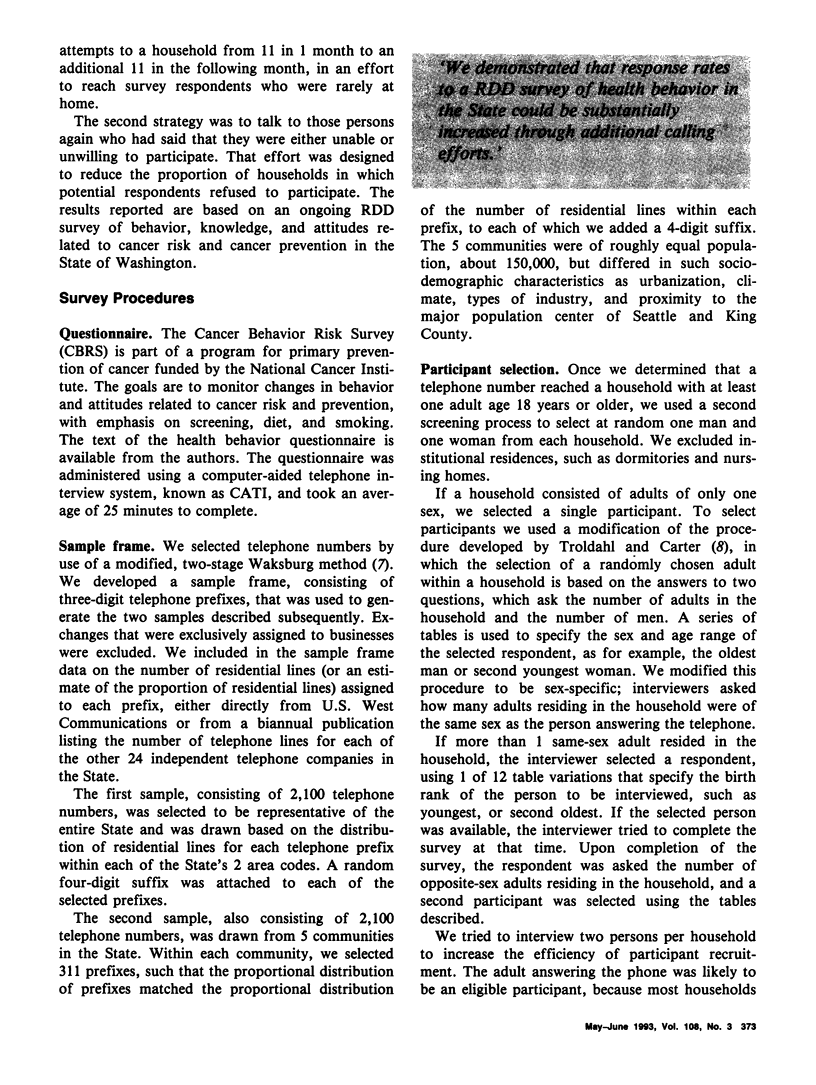
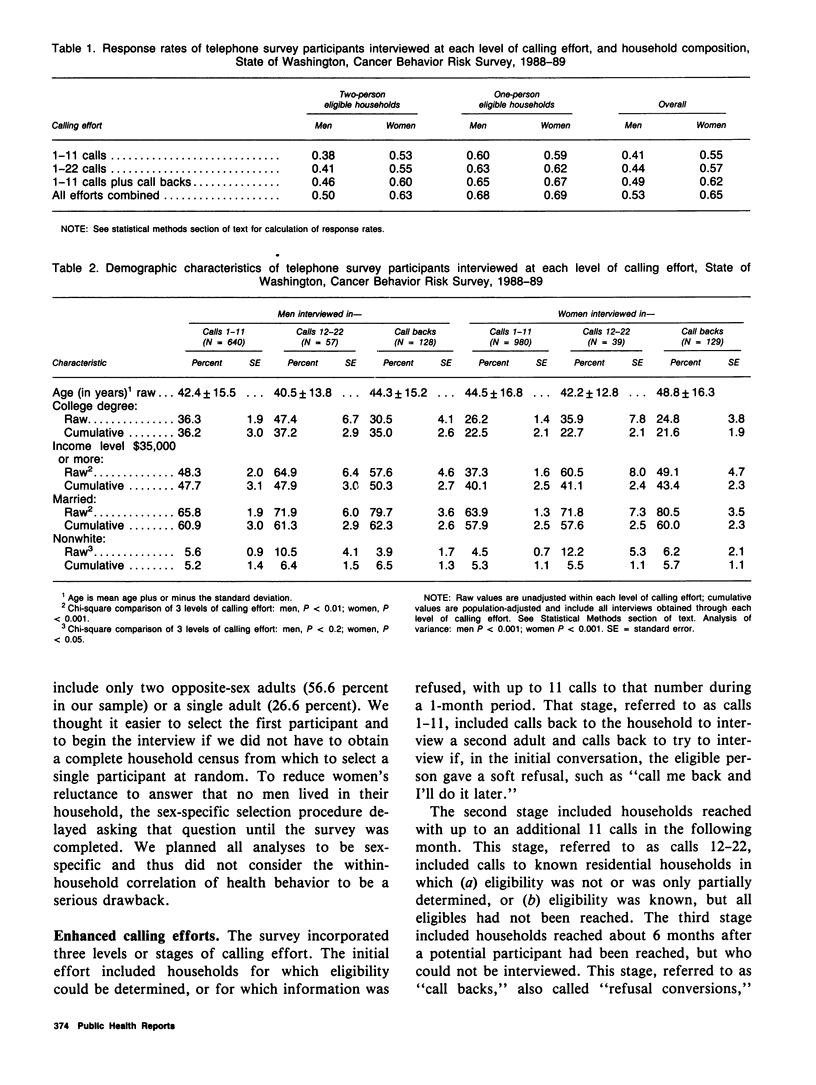
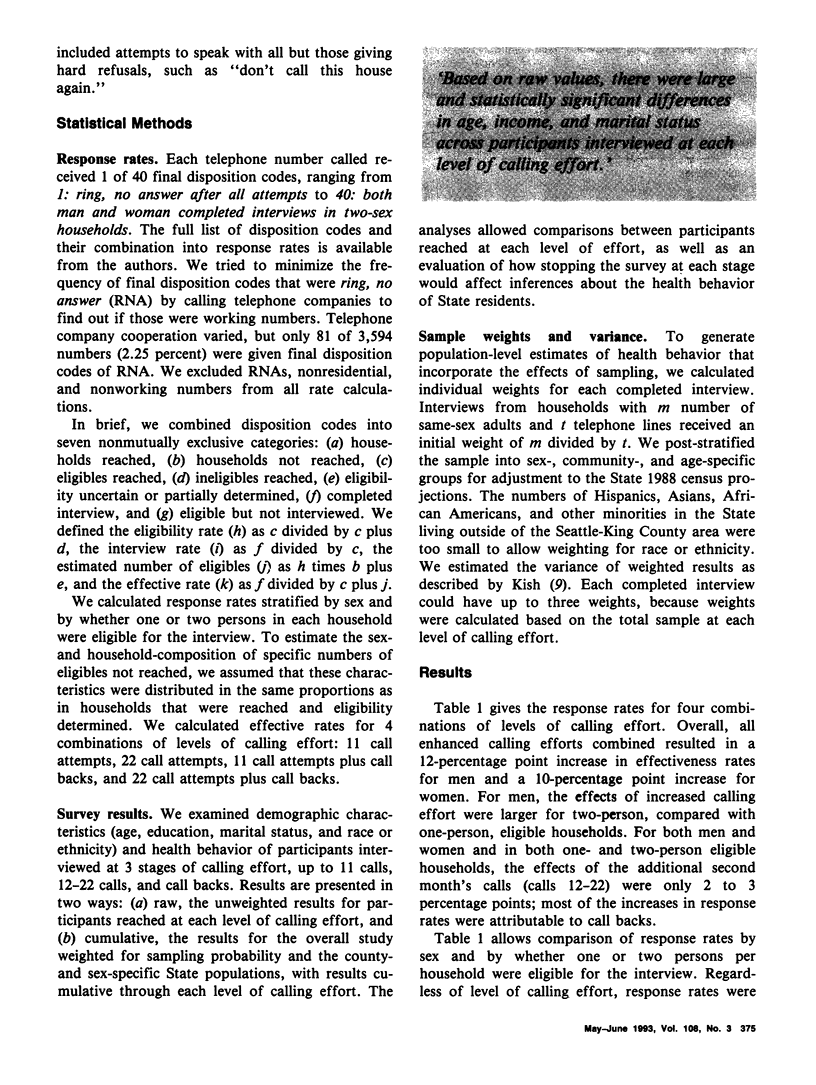
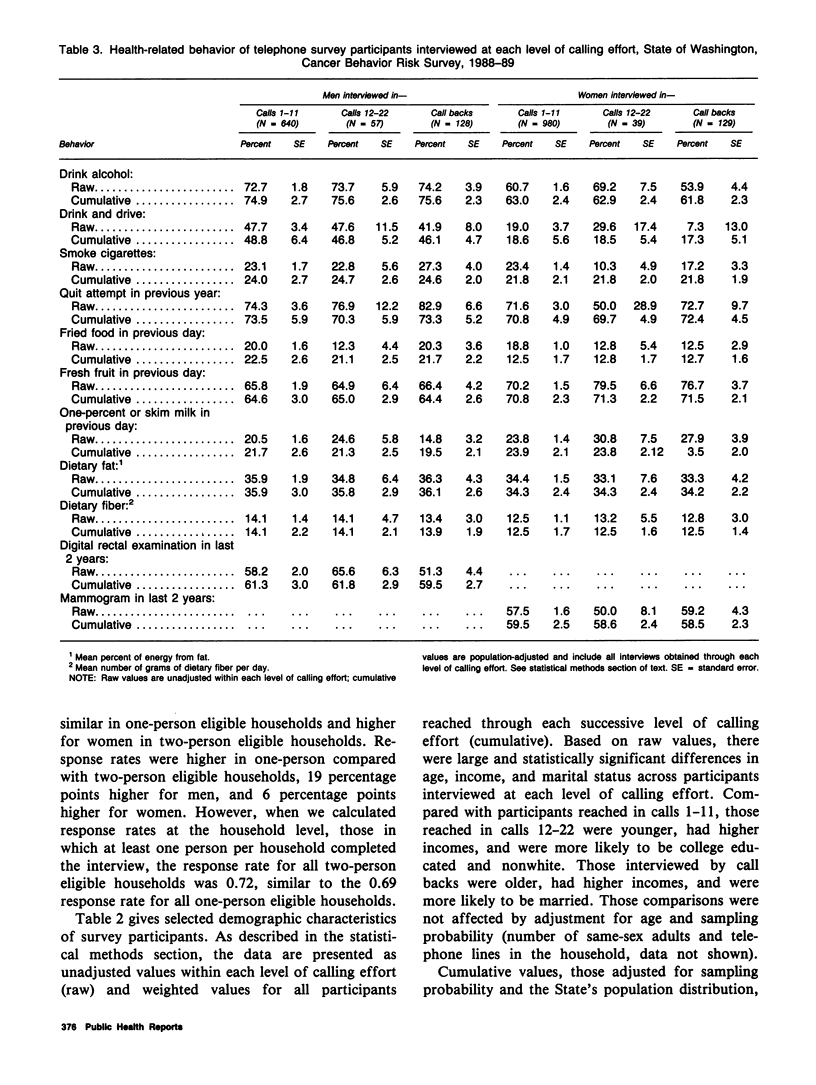
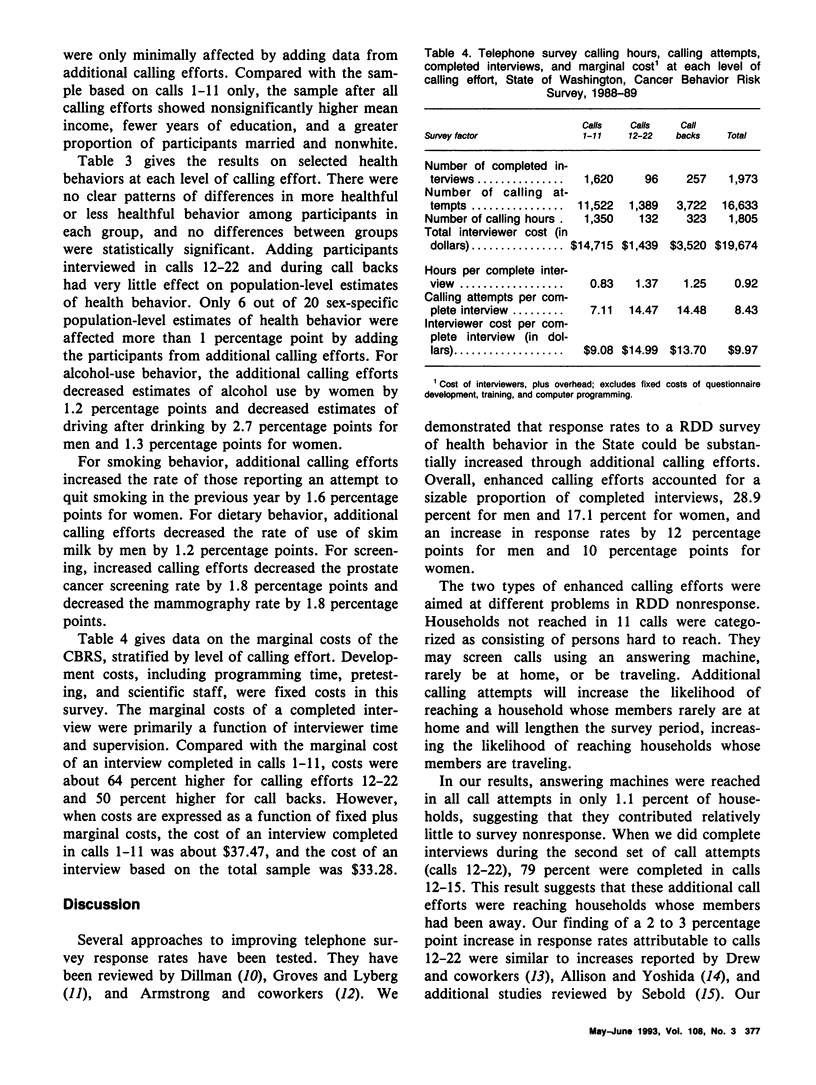
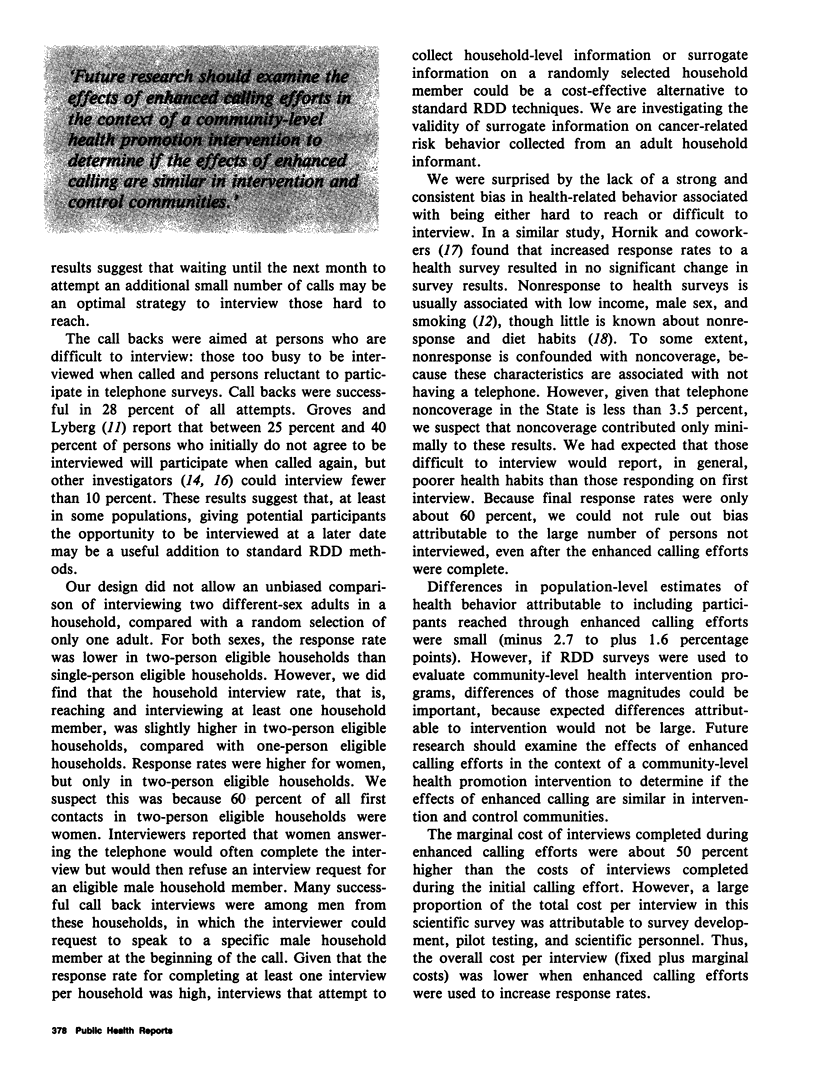
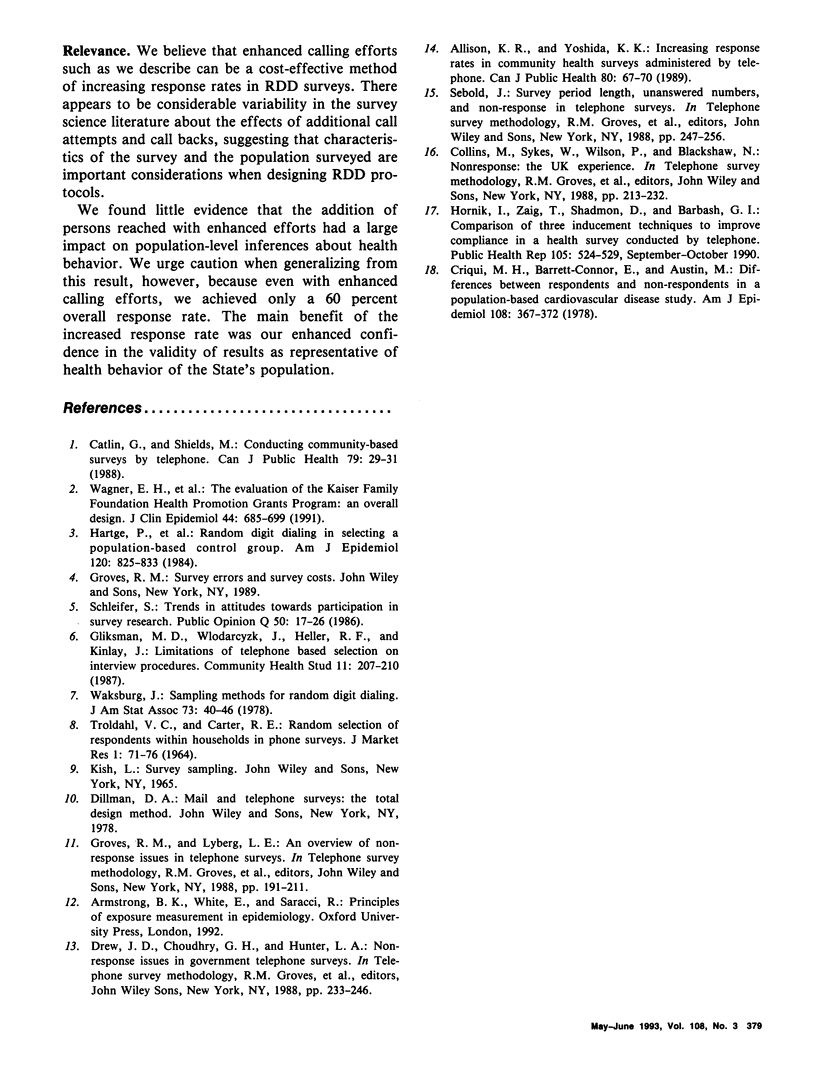
Selected References
These references are in PubMed. This may not be the complete list of references from this article.
- Allison K. R., Yoshida K. K. Increasing response rates in community health surveys administered by telephone. Can J Public Health. 1989 Jan-Feb;80(1):67–70. [PubMed] [Google Scholar]
- Catlin G., Shields M. Conducting community-based surveys by telephone. Can J Public Health. 1988 Mar-Apr;79 (Suppl 1):29–31. [PubMed] [Google Scholar]
- Criqui M. H., Barrett-Connor E., Austin M. Differences between respondents and non-respondents in a population-based cardiovascular disease study. Am J Epidemiol. 1978 Nov;108(5):367–372. doi: 10.1093/oxfordjournals.aje.a112633. [DOI] [PubMed] [Google Scholar]
- Gliksman M. D., Wlodarcyzk J., Heller R. F., Kinlay J. Limitations of telephone based selection and interview procedures. Community Health Stud. 1987;11(3):207–210. doi: 10.1111/j.1753-6405.1987.tb00008.x. [DOI] [PubMed] [Google Scholar]
- Hartge P., Brinton L. A., Rosenthal J. F., Cahill J. I., Hoover R. N., Waksberg J. Random digit dialing in selecting a population-based control group. Am J Epidemiol. 1984 Dec;120(6):825–833. doi: 10.1093/oxfordjournals.aje.a113955. [DOI] [PubMed] [Google Scholar]
- Hornik J., Zaig T., Shadmon D., Barbash G. I. Comparison of three inducement techniques to improve compliance in a health survey conducted by telephone. Public Health Rep. 1990 Sep-Oct;105(5):524–529. [PMC free article] [PubMed] [Google Scholar]
- Wagner E. H., Koepsell T. D., Anderman C., Cheadle A., Curry S. G., Psaty B. M., Von Korff M., Wickizer T. M., Beery W. L., Diehr P. K. The evaluation of the Henry J. Kaiser Family Foundation's Community Health Promotion Grant Program: design. J Clin Epidemiol. 1991;44(7):685–699. doi: 10.1016/0895-4356(91)90029-9. [DOI] [PubMed] [Google Scholar]


